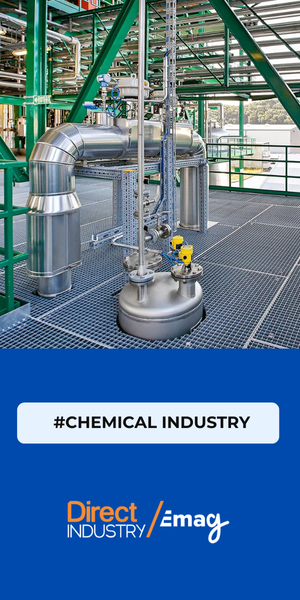Recent corporate board meetings share one agenda item: survival in a stall. Fresh numbers from the Bureau of Economic Analysis show real GDP slipping 0.3% in the first quarter of 2025, the first retreat in 18 months. Four days after the end of the first quarter, a blanket 10% tariff took effect, and a second order layered steeper surcharges on top trading partners, instantly increasing input costs. This one-two punch of shrinking output and swelling costs leaves executives hungry for a lever that widens margins without hacking payroll. Generative AI answers that need, turning cost pressure into a catalyst for rapid, targeted productivity gains.
A Jolt of Uncertainty Hits Corporate America
Tariffs shift overnight from cable-news headline to line-item nightmare. Importers scrambled to front-load inventory before the April deadlines, boosting short-term warehouse bills while draining demand from subsequent months, a dynamic economists flag as a classic recession tell. Retailers find themselves with full stockrooms and customers rattled by negative growth headlines.
Manufacturers face a different vice: higher component costs and a consumer unable to absorb price passes. Small and midsize firms, which account for roughly 44% of U.S. GDP, lack the cash buffers of multinationals and have little bargaining power with suppliers. Debt service compounds the squeeze now that refinancing rates hover well above their pre-pandemic lows. Layoffs would sap innovation and risk brand damage, yet standing still guarantees erosion.
Slowdowns Accelerate Technology Shifts
History teaches that downturns turn into tech adoption accelerants. In the dot-com bust, companies standardized messy processes through ERP suites. After the 2008 financial crisis, cloud computing turned capital-heavy server rooms into on-demand services, giving early adopters a structural cost edge that lingered long past the recovery.
Today’s recession script features generative AI as the pivotal prop. Unlike previous waves that trimmed hardware or storage expense, this one compresses the cost of cognition itself. A PwC survey finds that 73% of U.S. executives already use or plan to use generative AI for core functions, a nine-point jump in a single year. Deloitte reports that seventy-four percent of enterprises say their most advanced generative AI project meets or beats ROI targets, with twenty percent posting returns north of thirty percent.
Nearly 40% of small businesses deploy AI tools, up from 23% a year earlier, and the U.S. Chamber of Commerce expects the share to climb past fifty-one percent by December. Federal Reserve researchers track worker-level usage doubling in just twelve months, topping forty percent in programming and management roles. These numbers show a technology wave already past the pilot phase and heading straight for operating budgets.
READ ALSO
Generative AI Delivers Immediate Wins
Procurement teams feed last year’s contracts into fine-tuned language models that flag tariff-sensitive clauses and surface alternative suppliers before the next purchase order prints. One mid-market electronics assembler shaved 3% off average component costs, recouping nearly a third of the new duty burden in a single negotiation cycle.
Finance bots draft variance analyses, reconcile thousands of invoices, and alert controllers to anomalies days before books close, curbing cash bleed at the moment liquidity matters most.
Marketing departments deploy text-to-image tools to build campaign assets overnight, shrinking time-to-launch and freeing creative staff for high-impact concept work. Product designers pair generative visual models with CAD, transforming fuzzy sketches into manufacturable blueprints in hours.
The affordability equation tilts decisively in favor of action. Open-source model weights, hourly GPU rentals, and pay-as-you-go APIs let teams pilot on a corporate card, scale only when ROI proves out, and shut down experiments that miss the mark with minimal sunk cost.
Governance has already caught up: role-based access controls and prompt-security layers mitigate data-leak and bias risk, while federated-learning options satisfy privacy audits. Deloitte’s survey ranks cybersecurity and compliance among the highest-ROI domains for generative AI, evidence that responsible deployment is a feature, not a future. Crucially, every efficiency gain harvested by AI flows straight to net income, offsetting tariff drag dollar for dollar and sidestepping the morale hit that follows blunt workforce cuts.
READ ALSO
Timing seals the argument. Competitive gaps harden in recessions because cautious rivals delay. Companies that migrated early to cloud after 2008 still enjoy structural cost advantages; firms that dismissed e-commerce at the turn of the century spent a decade chasing Amazon’s head start. Generative AI stands at the same inflection point. Leaders who invest now emerge with refined data pipelines, practiced governance protocols, and a workforce already fluent in human-machine collaboration. Those who wait will reenter the growth phase only to find that AI-augmented competitors dictate new service benchmarks, siphon talent, and set price floors they cannot match.
Economic clouds dominate this year’s skyline, and tariffs add thunder. Yet downturns have always marked the moment when bold leaders translate adversity into advantage. Generative AI supplies the precise tool kit for that transformation, converting raw uncertainty into rapid, durable efficiency gains. Companies that seize it now will stabilize margins, capture dislocated market share, and shape the competitive landscape that follows the storm. Those that hesitate will discover the real risk of 2025 lies not in the recession itself but in missing the chance to reinvent while their peers race ahead.
READ ALSO











